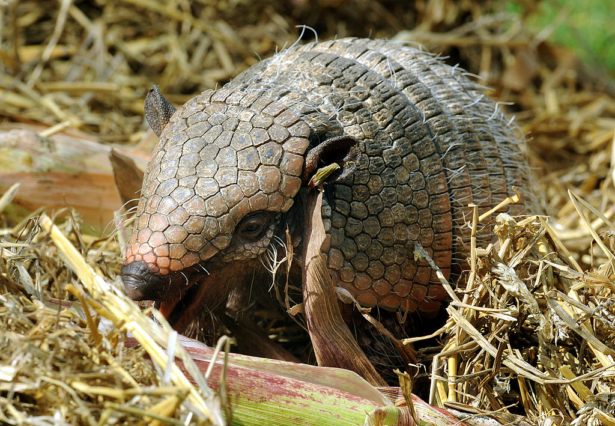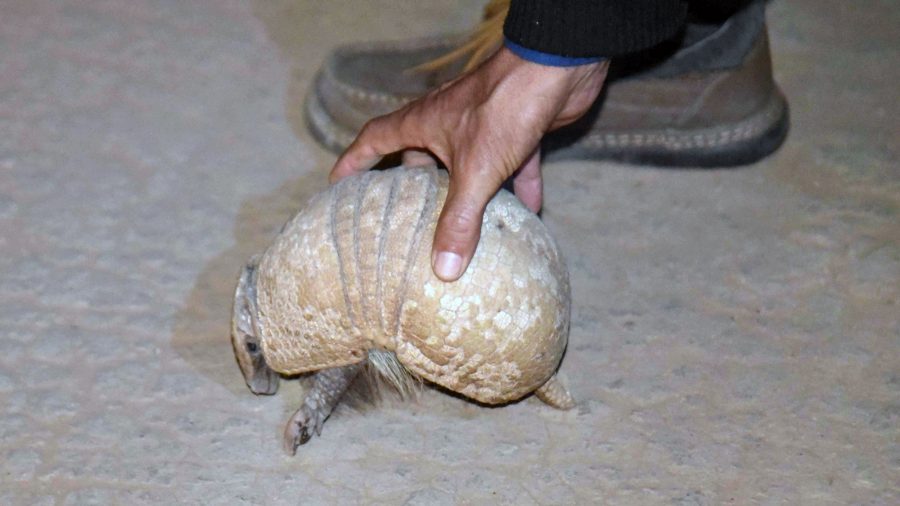A man who hunted armadillos decades ago, capturing them and selling them to scientists researching leprosy, said he was diagnosed with the disease himself.
The hunter, who has chosen to remain anonymous, said that he had raised red skin around his elbow for around five months before he went to the hospital.
Doctors thought the problem stemmed from an insect bite and sent him home after a Lyme disease test but he returned eight months later when the wound persisted.
He was then diagnosed with leprosy.
Armadillo hunter who used to catch and sell the mammals to scientists researching leprosy is diagnosed with the illness himself https://t.co/biExyGl8wi
— Daily Mail US (@DailyMail) July 1, 2019
Researchers wrote in a case report published in the BMJ Journals in June that there are about 200 new cases of leprosy in the United States, with most appearing in the southern parts of the country.
“It is believed to be linked to the region of the nine-banned armadillo in patients with no significant travel history outside of the country,” they wrote.
The former armadillo hunter, now 58, “had extensive exposure to armadillos and presented with the typical symptoms of large erythaematous patches, numbness, and peripheral nerve hypertrophy,” they wrote.
“Once diagnosed properly, patients are then reported to the National Hansen’s Center who provides the multidrug therapy for 12–24 months. Due to its rarity and its ability to mimic other more common ailments, leprosy should be included in the differential diagnosis in patients that have significant exposure to armadillos, live in the southern part of the country or have recently traveled to countries that have a high prevalence of leprosy.”
Researchers didn’t say when exactly the man was diagnosed with leprosy.
The research team, led by Dr. Christopher Logas, noted that armadillos have been expanding north in recent years.
“The armadillo population has been expanding to the north and east since the 19th century which may explain why some leprosy cases have been reported in patients from Canada who have not traveled outside of North America,” they wrote, according to the Daily Mail.
“Exposure may not have to be through direct contact with armadillos but may instead occur via exposure to infected soil or sphagnum moss containing M. leprae shed by the armadillo.”
The researchers said bacteria that causes leprosy can stay alive in soil for up to eight months.

Previous Research
The topic has been explored a number of times in the last decade or so.
According to John Stewart Spencer, a leprosy researcher at Colorado State University, humans first gave leprosy to armadillos thousands of years ago and armadillos are giving it back due to increased armadillo-to-human contact.
“At first, armadillos’ susceptibility to leprosy was a boost to science and medicine. Because they were the only animal other than humans in which the bacteria could be isolated, armadillos allowed scientists to study leprosy and possible treatments,” he wrote in an article for The Conversation.
“Now, there are millions of armadillos in the southern U.S., and people interact with them in a variety of ways. The animals’ leathery carapaces were fashioned into purses and boots; some were kept as pets in the home or brought to entertain people at petting zoos, children’s schools and at armadillo races at county fairs. In certain areas, people hunted them to serve at barbecues.”
Spencer was part of a team that found 62 percent of armadillos in a region of the Brazilian Amazon carried the bacteria that causes leprosy. The study was done in 2018.
Researchers found that wild armadillos and many patients with leprosy in the southern United States were infected with the same strain of leprosy in a study published in 2011, while a 2015 study found that “leprosy appears to be an emerging infection of armadillos” throughout the region.
“There are currently no established laboratory tests to aid in the diagnosis of leprosy, and the disease can only be detected once persons have clinical disease,” researchers noted.
Still, many experts have said the threat of leprosy remains small, noting that only about 5 percent of the American population can be infected by the bacteria.
“This is not a public health threat,” Richard Truman, chief of the laboratory research branch for the National Hansen’s Disease Program in Baton Rouge, Louisiana, told Live Science in 2015. “Leprosy is and will remain a very rare infection.”

